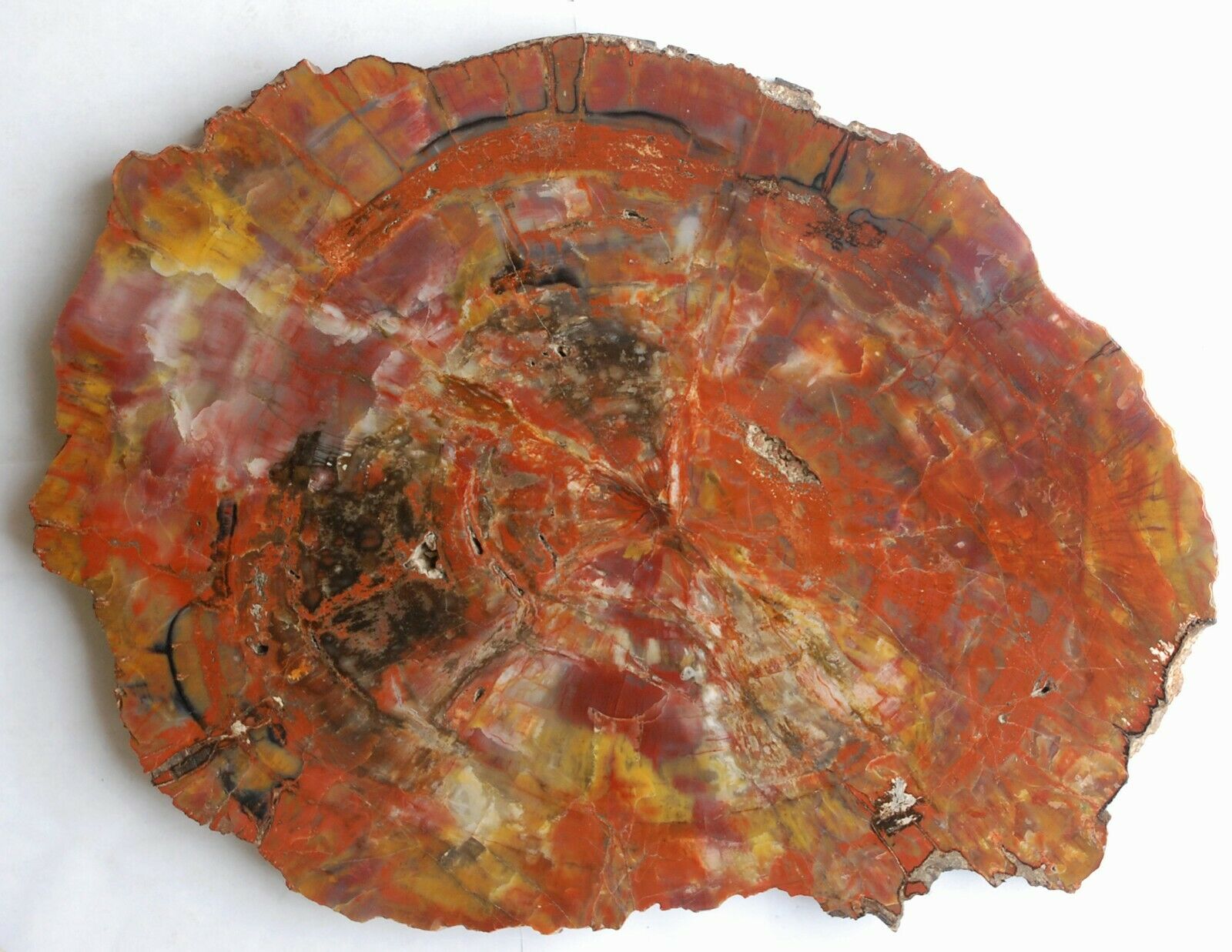-40%
Fossil Wood, Petrified wood slice 31 cm x 30 2 cm weight 2.3 kg East Java
$ 51.82
- Description
- Size Guide
Description
Fossil Wood, Petrified Wood slice 31 cm x 30 cm x 2 cm weight 2.3 kg. Highly polished. From tree-trunks dug up in East Java.Very decorative object: can be used as a paperweight or as something to place on the mantelpiece. Polished, but all growth rings are still visible. Black, beige/ brown/ dark yellow in colour.
Petrified wood is a type of fossil: it consists of fossil wood where all the organic materials have been replaced with minerals while retaining the original structure of the wood. The petrifaction process occurs underground, when wood becomes buried under sediment and is initially preserved due to a lack of oxygen. Mineral-rich water flowing through the sediment deposits minerals in the plant's cells and as the plant's lignin and cellulose decay away, a stone mould forms in its place.
Elements such as manganese, iron and copper in the water/mud during the petrification process give petrified wood a variety of color ranges. Pure quartz crystals are colorless, but when contaminants are added to the process the crystals take on a yellow, red or other tint. Following is a list of minerals and related color hues:
Copper - green/blue
Cobalt - green/blue
Chromium - green/blue
Manganese - pink
Carbon - black
Iron Oxides - red, brown, yellow
Manganese Oxides - black
Silica - white, grey
Petrified Wood - Indonesia
Indonesia has the largest deposit of petrified wood in the world, larger than Brazil, Arizona or even China. Indonesian Petrified Wood is from ancient teak (hardwood) trees that turned to stone. The petrified wood is from trees approximately 20 million years old. Minerals present in the mud and water prior to and during the petrification process leached into the wood giving it color.
At the end of the Tertiary era (Pliocene), a dense tropical forest, made up of Dipterocarpus (of the Magnolia family) and of palm trees, covers the Indonesian volcanic chain from Sumatra in Bali, to the west of Java. From time to time, the volcanoes became active. The force of the eruption was such that surrounding forests were uprooted. A thick layer of burning volcanic ash covered them.
The nearest trees were consumed, those insufficiently covered rotted away. But those between these two extremes benefited from ideal conditions. They became naturally sterilised by the heat which destroyed bacteria normally found in decay.
The silica found in volcanic ash became dissolved in the percolation fluids. It gradually replaced the wood, molecule after molecule, by minerals such as quartz, agate or marble, hence preserving the shape of the trees and even their cells. Petrified trees are sometimes found in streams, but the most beautiful pieces are found buried several meters deep.
Petrified wood is a type of fossil: it consists of fossil wood where all the organic materials have been replaced with minerals while retaining the original structure of the wood. The petrifaction process occurs underground, when wood becomes buried under sediment and is initially preserved due to a lack of oxygen. Mineral-rich water flowing through the sediment deposits minerals in the plant's cells and as the plant's lignin and cellulose decay away, a stone mould forms in its place. At the end of the Tertiary era (Pliocene), a dense tropical forest, made up of Dipterocarpus (of the Magnolia family) and of palm trees, covers the Indonesian volcanic chain from Sumatra in Bali, to the west of Java. From time to time, the volcanoes became active. The force of the eruption was such that surro












